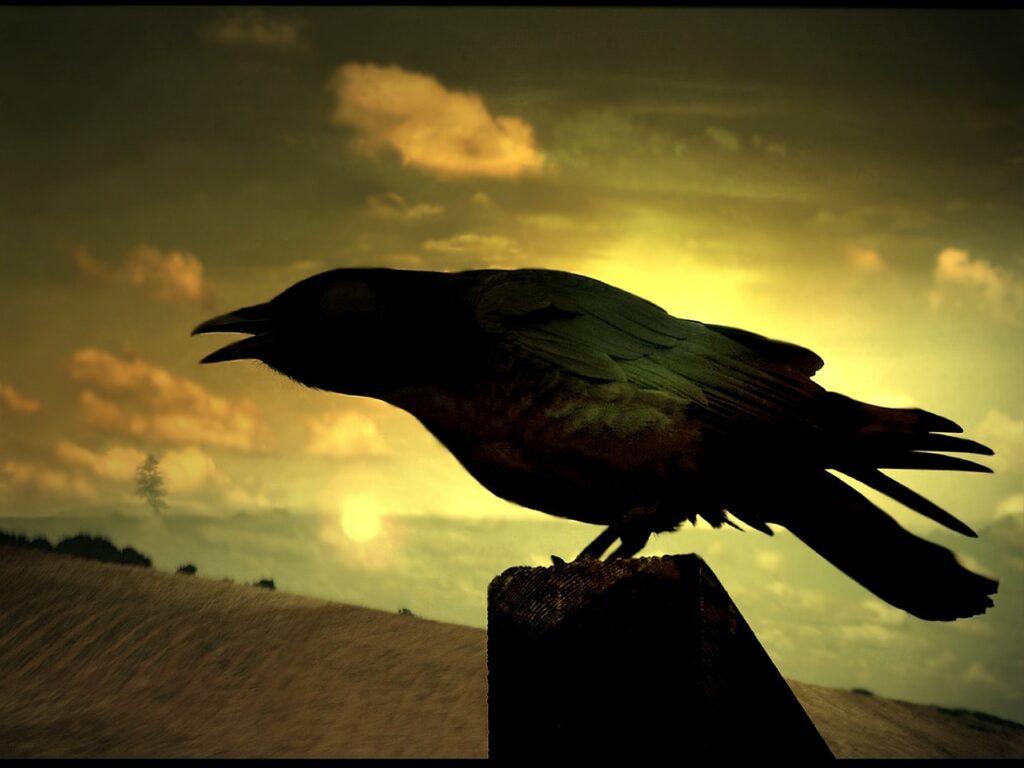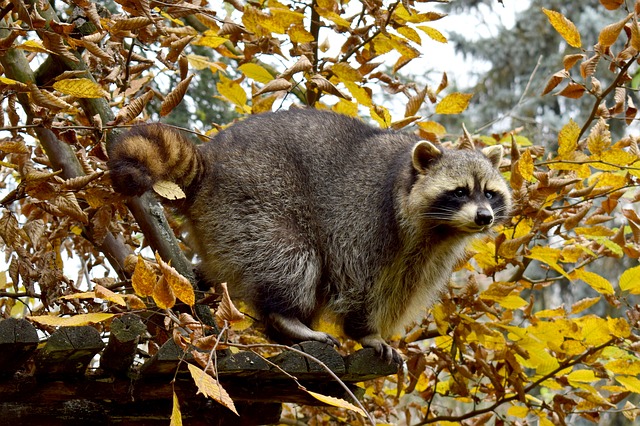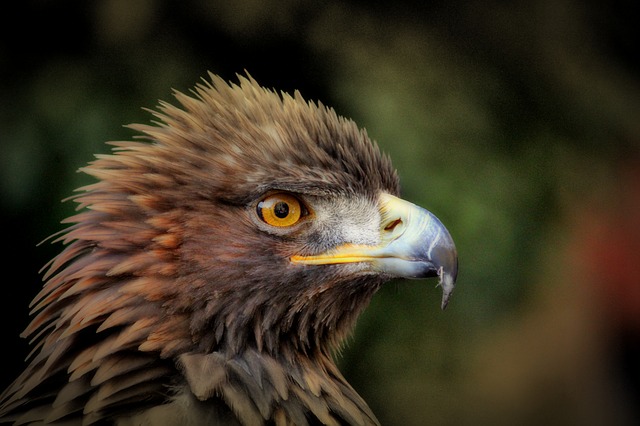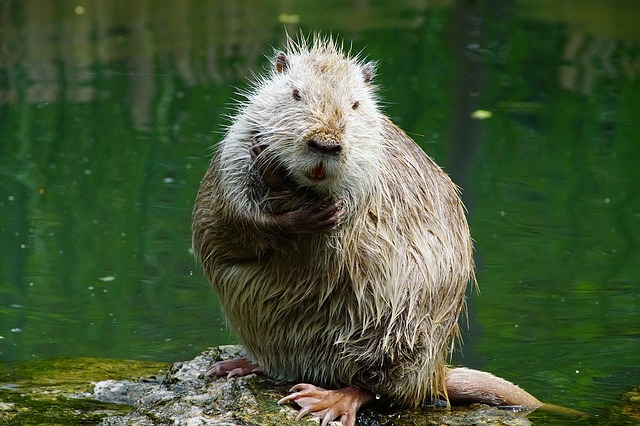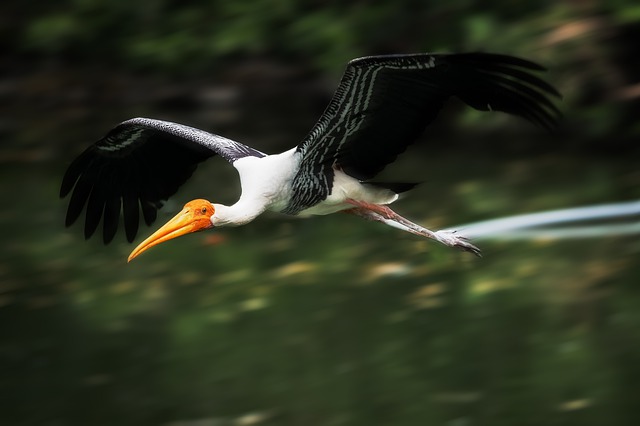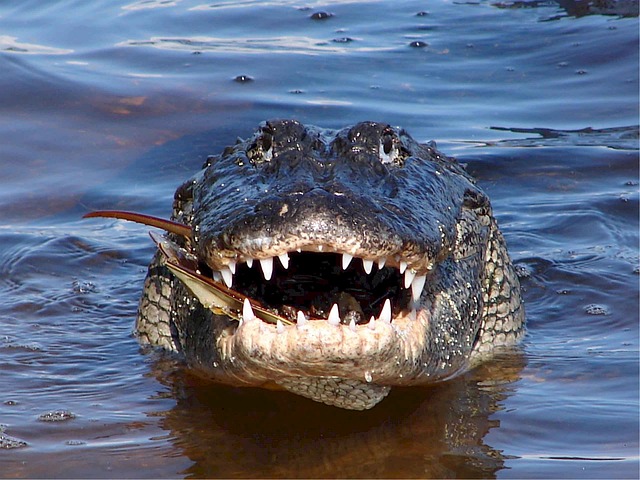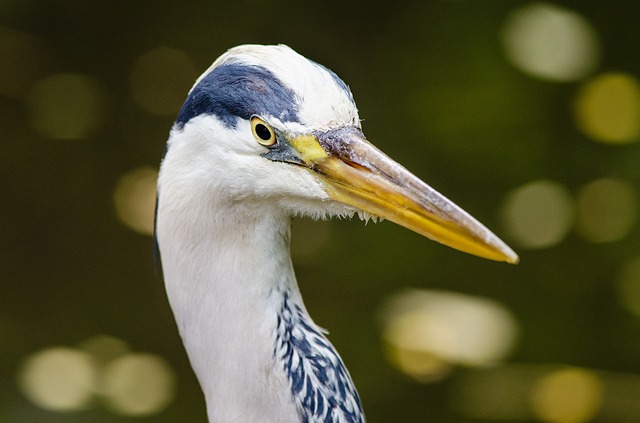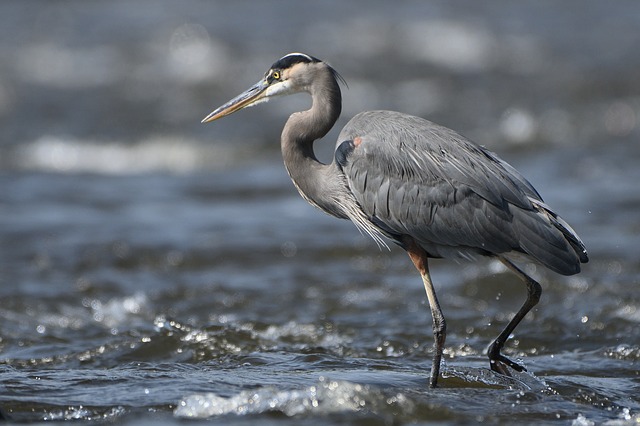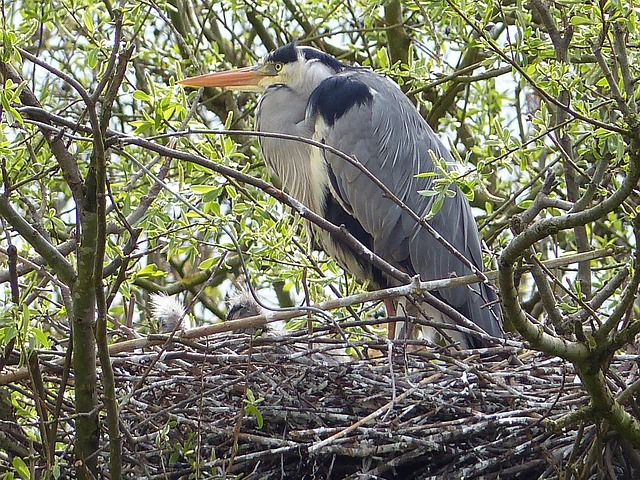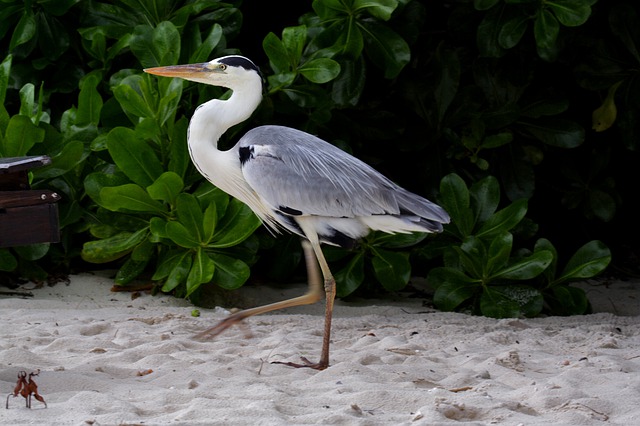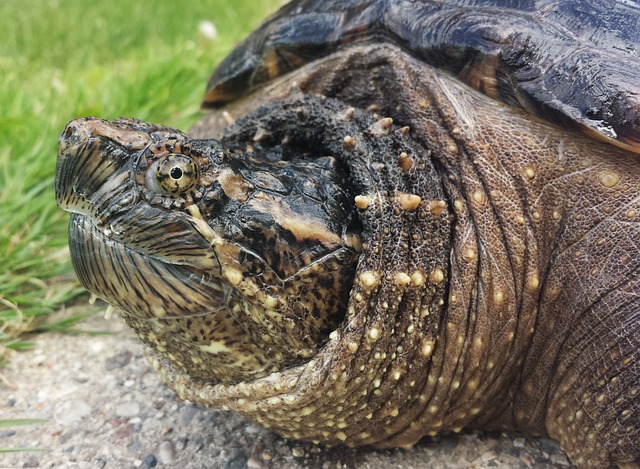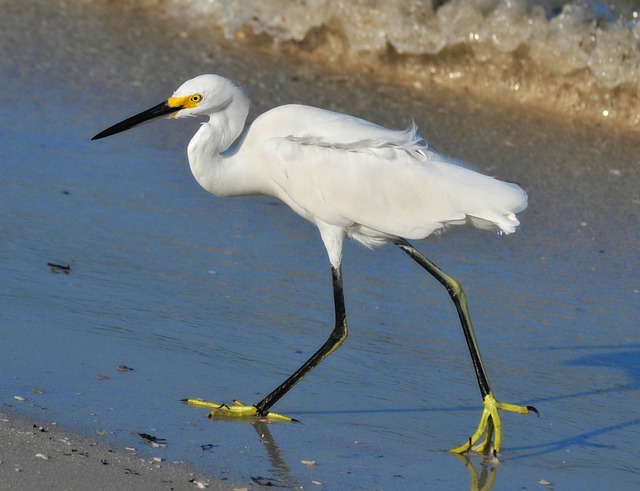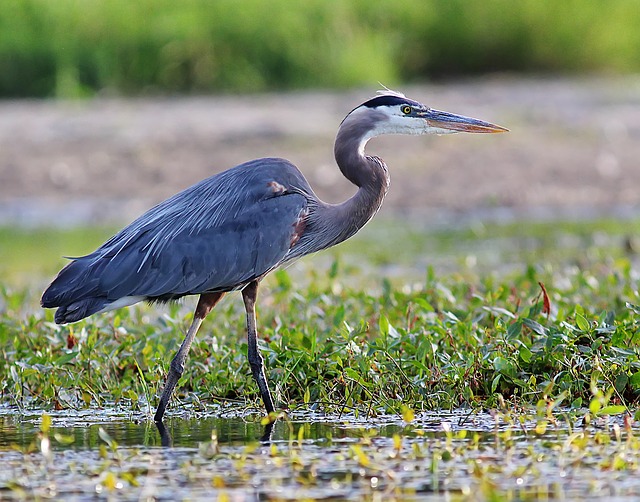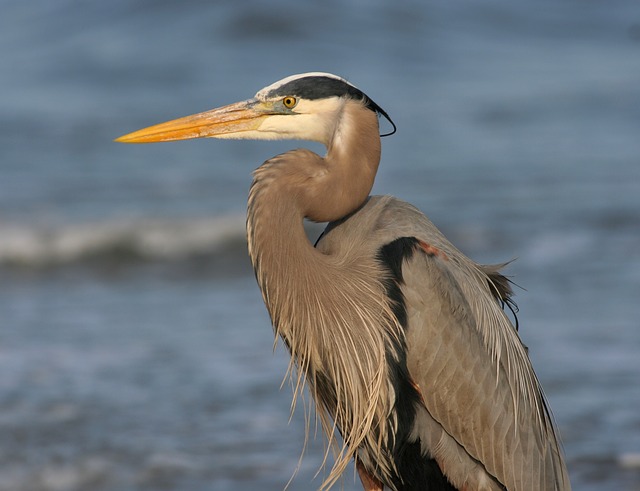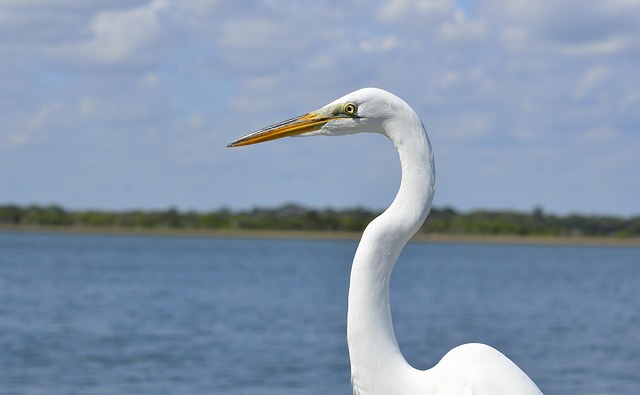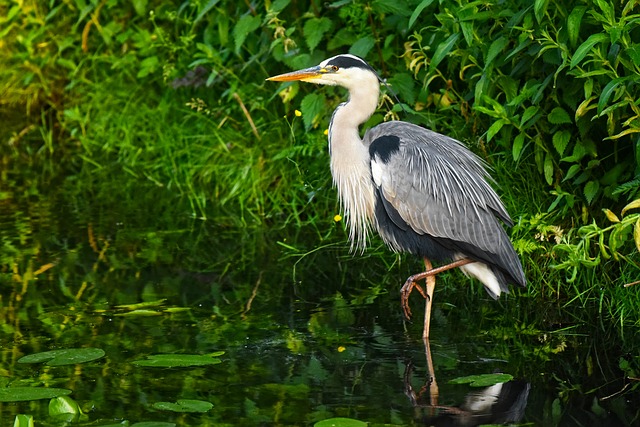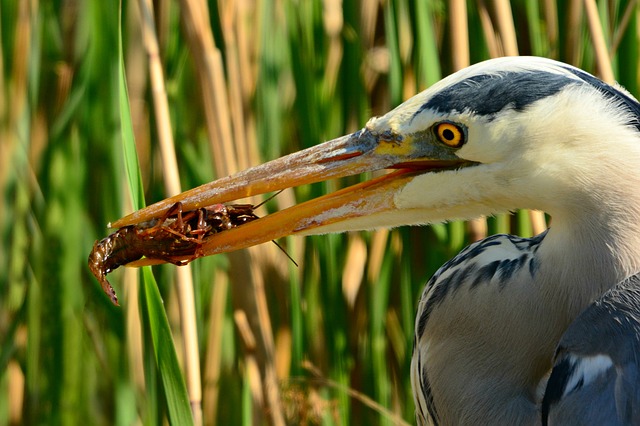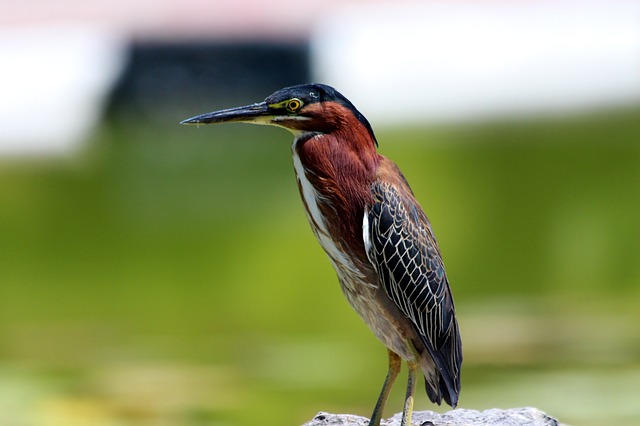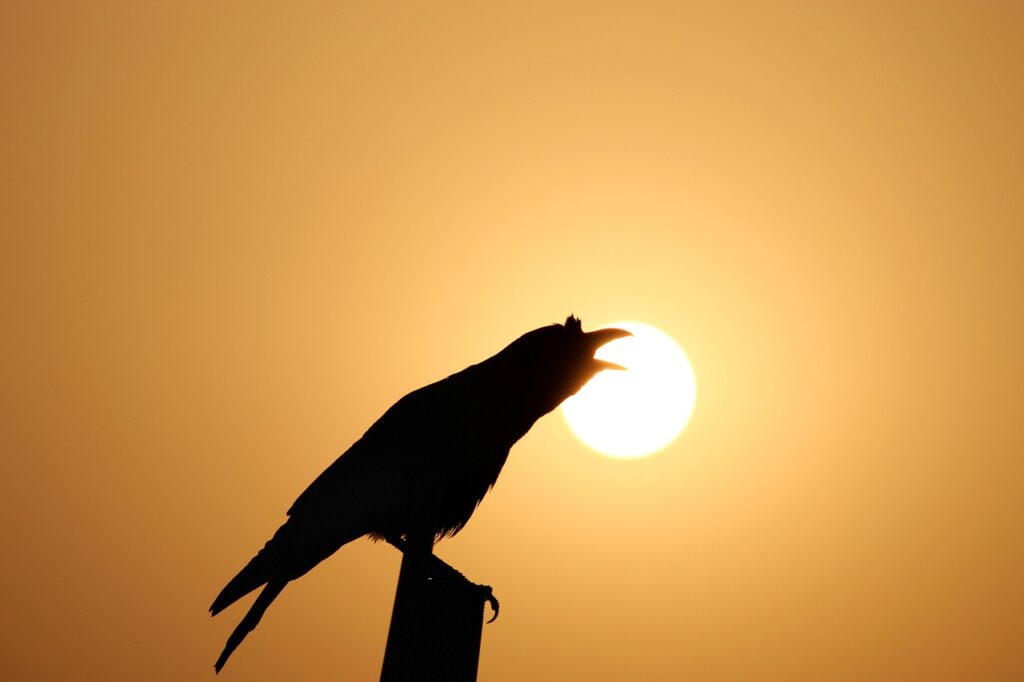
As anyone who has heard their loud “caws,” can tell you, crows are very noisy birds. In fact, they are considered one of the loudest of all bird species. But why are crows so loud? Read on to find out.
The Importance Of Vocalizations
Crows use vocalizations to pass on information to one another. For example, warnings of incoming predators to alerting rivals of territorial boundaries, and when attempting to attract a mate. And they use a range of different sounds to do so including calls, clicks, rattles, and squawks.
One of the most commonly heard are loud “caws,” which crows often use to warn other crows in their family group that there is danger. They also sometimes mimic the sounds of other animals and birds in their environment and are even capable of mimicking human speech.
Vocalizations are also highly important when it comes to establishing a social hierarchy and maintaining peaceful order in the family group. This group typically consists of a breeding pair (that stay together for life) and their offspring from previous years until they are sexually mature.
The breeding pair has the highest position in the group while the offspring hold varying positions which are determined by factors such as age, experience, and even the unique relationships between them. Together the group will forage for food, roost, raise the young, and defend their territory so cohesion in the group is immensely important.
Why Are Crows So Loud?
While crows aren’t the single loudest bird species on the planet they are one of them. In fact in ideal conditions, a crow’s call can be heard up to two miles away or even potentially farther. That’s pretty loud! Crows actually have a unique anatomy that allows them to vocalize at such high volumes.
Compared to most other birds they have a larger vocal tract. And in addition, the muscles surrounding their vocal tract are well-developed. This gives them the ability to generate both louder and more distinct calls than the majority of other bird species.
One of the most common reasons that crows call loudly is to alert their group to danger. When they spot a threat whether it’s a cat or hawk they will make loud caws to let the other crows in the area know. And if you happen to be wondering “Why are crows so loud when they see you,” the answer is you’ve most likely been spotted by a sentinel and identified as a threat.
It’s common for crows to strategically place sentinels to watch for danger. While the rest of the group forages for food one or more sentinels will be perched at high vantage points as lookouts for potential predators. And if a threat is spotted they will loudly sound the alarm giving the rest of the group time to escape.
Male crows in particular can be quite noisy during the breeding season as they make loud calls to attract a mate. The volume of their call is important since it is the loud and dominant males that typically are successful.
Why Are Crows So Loud In The Morning?
If you’ve ever been woken up by noisy crows in the morning you’re most likely wondering why they’re so loud in the early morning hours. Like many animals, crows are diurnal, which means that they are active during the day and sleep during the night. And crows often start their day with cawing sessions with the entire family group participating in a chorus of noisy vocalizations.
These sessions serve several significant purposes. Engaging in cawing sessions first thing in the morning reinforces the social bonds in their group at the start of the day, allows them to coordinate activities, and assert their presence in their territory for neighboring crows to hear. When doing so they sometimes will engage in back-and-forth calls with groups of crows from neighboring territories.
These exchanges between different groups can be quite intense and often be heard from a long way off. However, of course, crows may make loud calls or vocalizations at any time of the day, not just in the morning.
Why Are Crows So Loud At Night?
During the late fall and winter months, crows will sleep at night in communal roosts. These roosts are made up of many different individual groups of crows. And the total number of birds may be in the hundreds, thousands, or more.
Roosting in such large numbers helps to keep them safe from nocturnal predators such as owls, keeps them warm during the freezing winter nights, and allows them to communicate information to other groups, and possibly meet mates. During this time of year, they will return to their territory in the daytime to forage for food and defend it.
And each evening shortly before sunset they will fly to a pre-roost location. Different groups of crows will fly in from all around and interact and communicate with each other. This can be ear-piercingly loud especially if there is an enormous number of birds.
As darkness falls they will then move to the roost and there too they can be unbelievably loud as they find their positions for the night in the roost and begin to settle in. However, once they do settle, while still vigilant of predators, they are typically quiet during the rest of the night. That is of course unless they happen to be attacked or alerted to a predator during the nighttime hours.
Conclusion
So why are crows so loud? Crows have physical features that allow them to make calls at levels that are so loud that they can be heard for several miles. And they may make those calls in the defense of their territory, when attracting a mate, alerting their group to predators, and when roosting in large numbers. In addition, the volume of their calls can be influenced by the time of year and time of day.
Start Shopping for Birding Supplies!
Raccoon Pictures
Raccoons are easily recognizable by their black face mask and ringed tail. And there are many fascinating things about this intelligent nocturnal species. So we’ve compiled some of the best raccoon pictures to show you just how amazing and unique they are. Raccoon...
Eagle Pictures
Eagles are large powerful raptors with sharp talons and beaks. These apex predators are typically at top of the food chain and there are many interesting things about them. So we’ve compiled some of the best eagle pictures to show you just how amazing they are. Bald...
Nutria Pictures
Nutria are large semi-aquatic rodents from South America. In the United States where they were originally imported for the fur industry, they are an invasive species. Despite their pest status, there are many interesting things about them. So here are some of the best...
Stork Pictures
Storks are tall wading birds with long legs and necks. These amazing birds have many fascinating things about them. And we’ve compiled some of the top stork pictures to help show you just how interesting and beautiful they are. White Stork The white stork has a body...
Alligator Pictures
The American alligator is a large predatory reptile that inhabits the southeastern United States. It’s a fascinating animal with many interesting things about it. And we’ve collected some of the best alligator pictures to help show you just how amazing they are....
How Long Do Great Blue Herons Live?
The life expectancy of birds is known to be closely related to their size. So as the biggest heron species in North America, how long do great blue herons live? The average life expectancy for these large birds is around fifteen years. However, surviving their first...
Where Do Great Blue Herons Live?
The great blue heron is considered to be the most widespread heron in North America. So exactly where do great blue herons live? Here’s what you’ll want to know. Great Blue Heron Range The great blue heron is found throughout most of the North American continent. In...
Where Do Great Blue Herons Nest?
While many of us have seen great blue herons their nesting habits often remain a mystery to most people. That’s because they purposely nest in hard-to-reach places. So where do great blue herons nest? Here’s the answer. A Colony Nester Typically great blue herons nest...
Do Great Blue Herons Migrate?
Do great blue herons migrate? This is something many people wonder about, especially if they’ve seen a heron during the cold winter months. And the answer is both yes and no. Here’s what you’ll want to know. Great Blue Heron Range The great blue heron has a large...
Great Blue Heron Pictures
Few species of birds are as tall, elegant, and attractive as the great blue heron. So we’ve compiled some of the best great blue heron pictures for you to admire and help you to learn more about this amazing bird! Great Blue Heron Head The head of the great blue heron...
What Do Snapping Turtles Eat?
Many people are familiar with the fact that snapping turtles have an incredibly strong bite. They use their strong jaws and sharp beak not just for defense but also for catching food. So what do snapping turtles eat? Here's what you'll want to know. Snapping turtles...
Birds That Look Like Egrets
Egrets are predatory birds that hunt and live in a range of both freshwater and saltwater habitats. These birds are usually white, and have S-shaped necks, long legs, and dagger-like beaks. However, they are often mistaken for several other types of birds that look...
Birds That Look Like Storks
Storks are large wading birds with robust bills and long legs. These tall carnivorous birds are well-known for their wide wingspans and also for building huge nests. However, they are often confused with several other bird types that have a similar appearance. So...
Birds That Look Like Herons
Herons are tall birds with long slender legs and necks. And they often wade in the water when hunting for food. Yet there are several other types of birds that may be mistaken for them. To make things more confusing many of these birds also spend time in the water and...
Great Blue Heron Facts
The great blue heron is named for its size and the grey-blue color on its wings, stomach, and back. This species has many fascinating things about it. So here are the top great blue heron facts. It's The Largest North American Heron The great blue heron is a big bird...
Are There White Herons?
Are there white herons? This is something many people wonder especially after seeing a tall all-white bird. The answer is yes! And here’s a fast introduction to them. A White Color Morph Most people are familiar with the great blue heron, a large predatory and...
Great White Heron Facts
While many people are familiar with the great blue heron, they are often surprised to find out that there’s also a great white heron. There are many things you’ll want to know about this stunning bird. So here are the top great white heron facts. The Great White Heron...
What Animals Eat Herons?
Because of their size and long sharp beaks, it can be hard to imagine that herons have any natural predators. While they do, they definitely don’t have nearly as many predators as most other types of birds. So what animals eat herons? Predators Of Adult Herons For...
What Do Herons Eat?
Great blue herons are often seen slowly wading in shallow water hunting for food. You may have even spotted one of these large birds in your own backyard pond. This leaves many people wondering: “What do great blue herons eat?” And here’s everything you’ll need to...
What Do Green Herons Eat?
The green heron is a secretive and small heron species. What it lacks in size however it makes up for in intelligence. It is particularly well-known for how it uses its smarts when hunting for food. So what do green herons eat? Read on to find out. Meet The Green...
